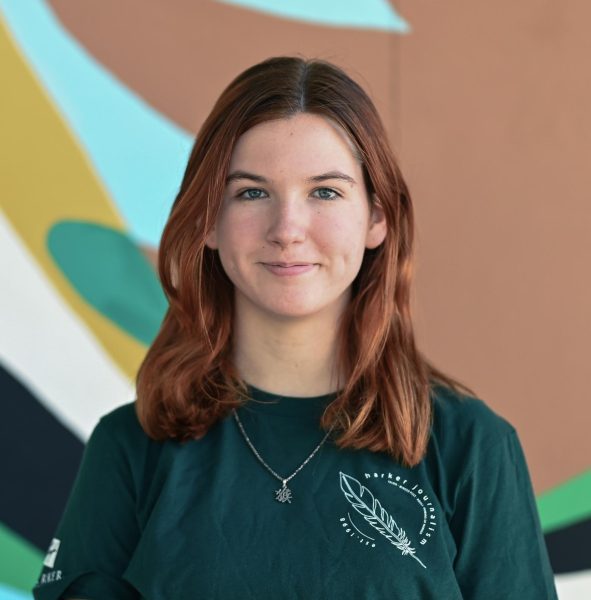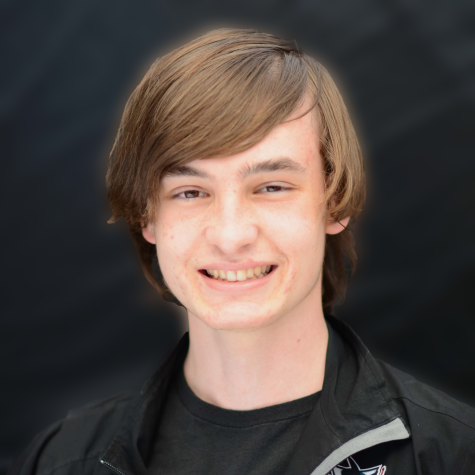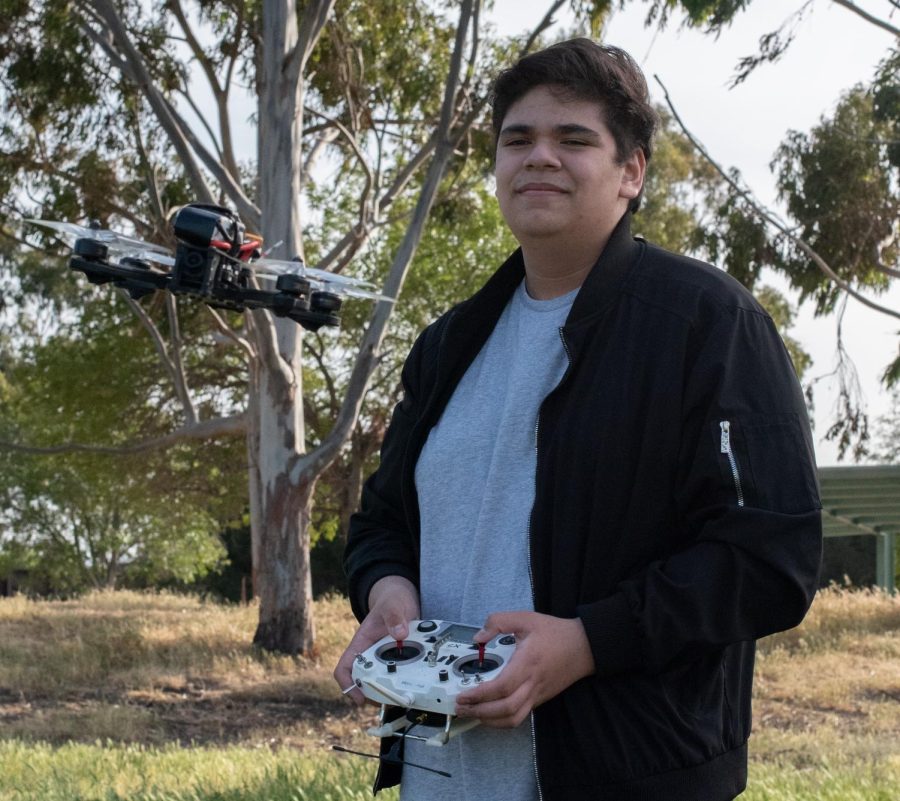Humans of Harker: Flying higher into the sky
Will Yashar challenges himself and his community
“A lot of hobbies you do or you get into, there’s people behind it who also enjoy that. So it helps you network. For example, I have a lot of friends that don’t go to Harker, but I still consider them close friends because of it. It helps you meet new people. Trying stuff isn’t just for the thing itself, but for the people,” Will Yashar (12) said.
The risk taker who flies built-from-scratch drones that go 120 miles per hour. The entrepreneur who owns a 3D printing company as a side business and bought Tesla stocks just to test out the market. The explorer who randomly opened eParkour Sports club in his freshman year. This is Will Yashar (12), a self-defined risk taker who never shies away from opportunities.
Will first started challenging himself through drones in eighth grade, an interest sparked by a YouTube recommendation on radio control planes. After meeting a friend who flew drones, Will began diving deeper into the field by building his own drones and racing them.
“I got it in the air, and I was flying it around way faster than I thought it would, so that was interesting,” Will said. “But I couldn’t get it turned off, so it flew until it died. Then it slammed on the ground, but it was still fun.”
With more responsibility and free time, Will began dedicating more time and effort into drone-building. After five years of practice, Will designated a basic drone-designing workflow.
According to Will, the drone process goes as follows: find a design, cut carbon fiber, do electrical work, mount electrical work onto the carbon fiber, work out power distribution, attach the camera and video transmitter and prepare for flight. Despite having the same basic design process, Will has altered his methodology for each drone he has made, creating a system that can take multiple months to complete.
“You’re building something from scratch, so you have to get all the parts put together yourself,” Will said. “It’s a little bit complex electrically, [and] in general, you have to cut your own carbon fiber, [which is] not an easy process.”
While making drones may be complicated at times, Will finds that online resources and a strong community make the procedure less tedious. The online drone community served as a large aid when Will began the process, as he explored online resources, pre-made designs, instructional videos and drone-building kits to get started. Will attributes these to helping him get his footing in the community and start making drones for himself.
Having a group of people to help support him in his drone-making process has not only allowed Will to develop drones but also open up to a strong community around him.
“[Drones] not only helped me intellectually [expand my] basic knowledge of electronics now, [but] there’s also a community aspect, too,” Will said. “It helps you network. For example, I have a lot of friends that don’t go to Harker, but I still consider them close friends because of it. It helps you meet new people.”
Will’s community in high school, both outside and inside the classroom has shaped him into a well-rounded person. With his knowledge of business from economics classes, he created his own 3D printing company, which prints STL files from customers in under an hour, simplifying the 3D printing process. His love for drones was supplemented by classes on hardware and electronics, while he also dove deeper into the process of electrical construction and engineering via robotics. As an analyst and a fast learner, Will explored robotics by attending tournaments and partaking in the building process of robots.
Outside the classroom, Will builds his community by communicating with those around him. Robotics teammate and close friend since eighth grade Anish Pai (12) describes Will’s enthusiasm to try to explore his surroundings with his friends.
“He’s a really good people-person, and he’s able to talk his way out or into situations,” Anish said. “He’s very energetic, very willing to do things, always wants to go out and always wants to try new things. Recently, we’ve gone to some restaurants that we haven’t tried before, or [have] driven around, trying to find new activities to do.”
Aside from being someone who challenges himself, Will also supports his community through his kindness towards his friends. Close friend Gabriella Gary (12) notes Will’s positivity and consideration.
“He is definitely kind-hearted and generous, [and] I’ve never seen him be rude to anybody,” Gabriella said. “He’s got the biggest heart for sure. For example, for my birthday, he set up a whole dinner, like a picnic and totally spoiled me that day.”
Most notably, Will has grown from his first days of freshman year, when he mostly focused on his love for drones. Anish recognizes Will’s growth in his four years of high school, starting from the end of freshman year.
“[Will has] definitely matured in aspects of doing things,” Anish said. “I remember in freshman year, he was not [very] open to try new things. But … at the end of freshman year, he opened up parkour eSports Club, and I helped him with that. Since then, we’ve done random stuff together and grown as people.”
As someone who has grown to understand how risks push boundaries and has witnessed his own success from taking them, Will acknowledges the importance of challenges.
“A lot of hobbies you do or you get into, there’s people behind it who also enjoy that, [so] take more risks,” Will said. “If you take a little risk usually you don’t get burned by it. Trying stuff isn’t just for the thing itself, but for the people.”

Charlie Folk (11) is the co-organizations editor for the TALON Yearbook, and this is his third year on staff. This year, Charlie hopes to improve on his...

Ananya Sriram (12) is a co-managing editor for the Winged Post, and this is her fourth year on staff. This year, Ananya hopes to bond more with members...

Carter Chadwick (12) is the co-photo editor of the TALON Yearbook, and this is his fourth year on staff. He aims to raise the book on a photographic level...


















![“[Building nerf blasters] became this outlet of creativity for me that hasn't been matched by anything else. The process [of] making a build complete to your desire is such a painstakingly difficult process, but I've had to learn from [the skills needed from] soldering to proper painting. There's so many different options for everything, if you think about it, it exists. The best part is [that] if it doesn't exist, you can build it yourself," Ishaan Parate said.](https://harkeraquila.com/wp-content/uploads/2022/08/DSC_8149-900x604.jpg)




![“When I came into high school, I was ready to be a follower. But DECA was a game changer for me. It helped me overcome my fear of public speaking, and it's played such a major role in who I've become today. To be able to successfully lead a chapter of 150 students, an officer team and be one of the upperclassmen I once really admired is something I'm [really] proud of,” Anvitha Tummala ('21) said.](https://harkeraquila.com/wp-content/uploads/2021/07/Screen-Shot-2021-07-25-at-9.50.05-AM-900x594.png)







![“I think getting up in the morning and having a sense of purpose [is exciting]. I think without a certain amount of drive, life is kind of obsolete and mundane, and I think having that every single day is what makes each day unique and kind of makes life exciting,” Neymika Jain (12) said.](https://harkeraquila.com/wp-content/uploads/2017/06/Screen-Shot-2017-06-03-at-4.54.16-PM.png)








![“My slogan is ‘slow feet, don’t eat, and I’m hungry.’ You need to run fast to get where you are–you aren't going to get those championships if you aren't fast,” Angel Cervantes (12) said. “I want to do well in school on my tests and in track and win championships for my team. I live by that, [and] I can do that anywhere: in the classroom or on the field.”](https://harkeraquila.com/wp-content/uploads/2018/06/DSC5146-900x601.jpg)
![“[Volleyball has] taught me how to fall correctly, and another thing it taught is that you don’t have to be the best at something to be good at it. If you just hit the ball in a smart way, then it still scores points and you’re good at it. You could be a background player and still make a much bigger impact on the team than you would think,” Anya Gert (’20) said.](https://harkeraquila.com/wp-content/uploads/2020/06/AnnaGert_JinTuan_HoHPhotoEdited-600x900.jpeg)

![“I'm not nearly there yet, but [my confidence has] definitely been getting better since I was pretty shy and timid coming into Harker my freshman year. I know that there's a lot of people that are really confident in what they do, and I really admire them. Everyone's so driven and that has really pushed me to kind of try to find my own place in high school and be more confident,” Alyssa Huang (’20) said.](https://harkeraquila.com/wp-content/uploads/2020/06/AlyssaHuang_EmilyChen_HoHPhoto-900x749.jpeg)



